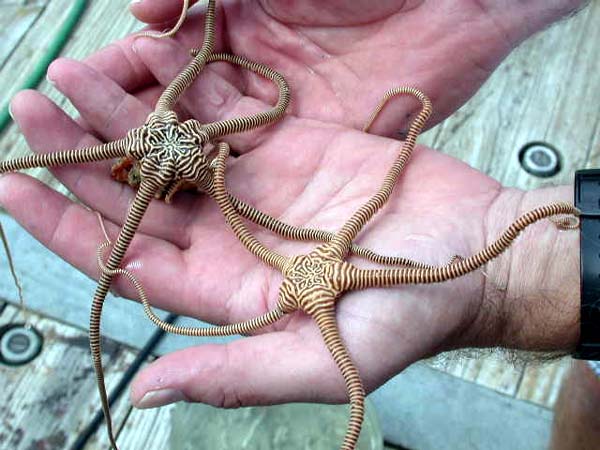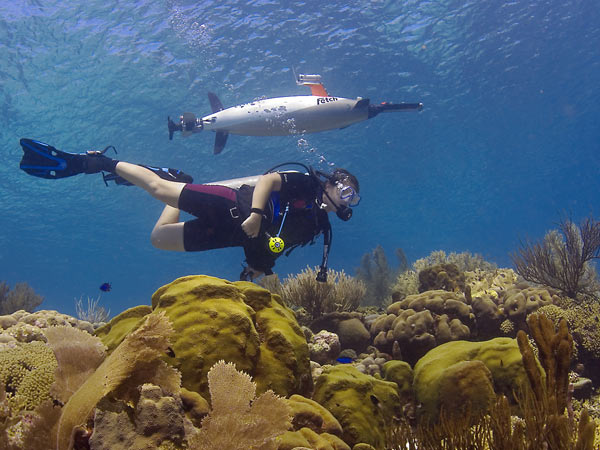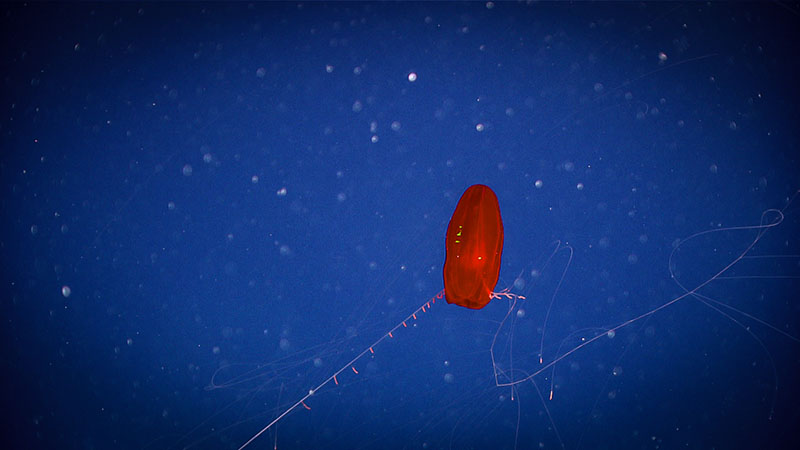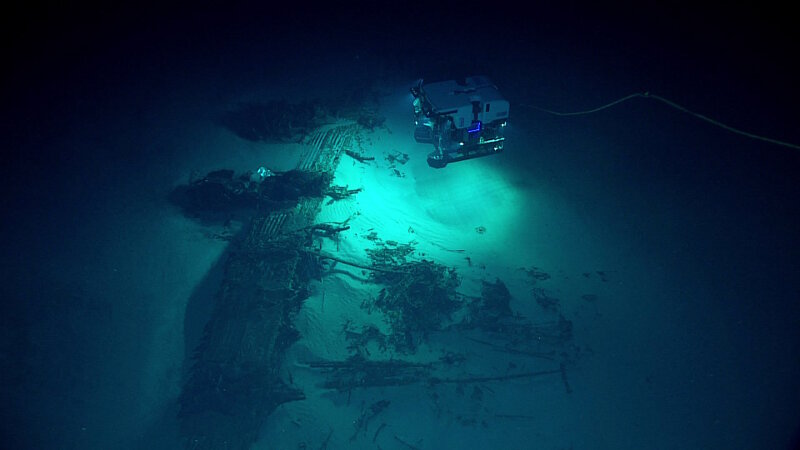Celebrating 20 Years of NOAA Ocean Exploration
In April 2001, the NOAA Ocean Exploration Program was established in response to the recommendations and challenges set forth in the Report of the President’s Panel for Ocean Exploration and in recognition of the value such a program could provide to NOAA and the nation. Since that time, the program has grown and evolved. Our commitment to explore our ocean and make ocean exploration more accessible, however, has never waivered.
View HighlightsToday, we operate with the mission to explore the ocean for national benefit, and we remain the only U.S. federal program dedicated to exploring the deep ocean. Working with partners, we continue to fill gaps in the basic understanding of U.S. deep waters and the seafloor and deliver the ocean information needed to strengthen the economy, health, and security of the United States.

These brittle stars were collected during one of the earliest expeditions supported by NOAA Ocean Exploration, the 2001 Islands in the Stream expedition to explore protected and unprotected deepwater coral reefs and hard-bottom communities throughout the Gulf of Mexico and South Atlantic regions.
Learn more
In 2008, we supported an expedition to use autonomous underwater vehicles (AUVs) and technical diving to explore Bonaire, Netherlands Antilles, one of the most pristine coral reef environments in the Caribbean, advancing innovative technologies to expand the scope and efficiency of exploration and collect information about a critical marine habitat.
Learn moreUsing the latest tools and technology, our office explores unknown or poorly known areas of our deep ocean, making discoveries of scientific, economic, and cultural value.
Through live video and data streams, online coverage, training opportunities, and events, we allow scientists, resource managers, students, members of the general public, and others to actively experience ocean exploration, allowing broader scientific participation, cultivating the next generation of ocean explorers, and engaging the public in exploration activities.
To better understand our ocean, we make exploration data publicly available. This allows us, collectively, to more effectively maintain ocean health, sustainably manage our marine resources, accelerate our national economy, and build a better appreciation of the value and importance of the ocean in our everyday lives.

The water column is the largest, yet one of the most underexplored, habitats on the planet. Efforts by our office to explore this vast realm, including midwater exploration conducted during expeditions on NOAA Ship Okeanos Explorer, are helping us understand the importance of the huge biomass that lives in the water column and its importance to the global carbon and other biogeochemical cycles. In this image, a potentially undescribed ctenophore floats gracefully in the water column during a Deep Connections 2019 expedition dive.
Learn more
Between 2015 and 2017, we led the ‘Campaign to Address Pacific monument Science, Technology, and Ocean NEeds (CAPSTONE),’ a major multi-year foundational science effort that enhanced our understanding of deepwater areas of U.S. marine protected areas in the central and western Pacific. In this image, remotely operated vehicle Deep Discoverer surveys a B-29 Superfortress aircraft resting upside down on the seafloor. This was the first B-29 crash site found of over a dozen American B-29s lost in the area while flying missions during World War II.
Learn moreHighlights
Throughout 2021, we’ll be sharing highlights from the past 20 years both here on the web and on social media and hope you will join us in celebrating our history.
Cheers to 20 years of NOAA Ocean Exploration — enhanced by the collaboration and support of the scientific community and the public alike. Here's to the next 20 years of discoveries!

